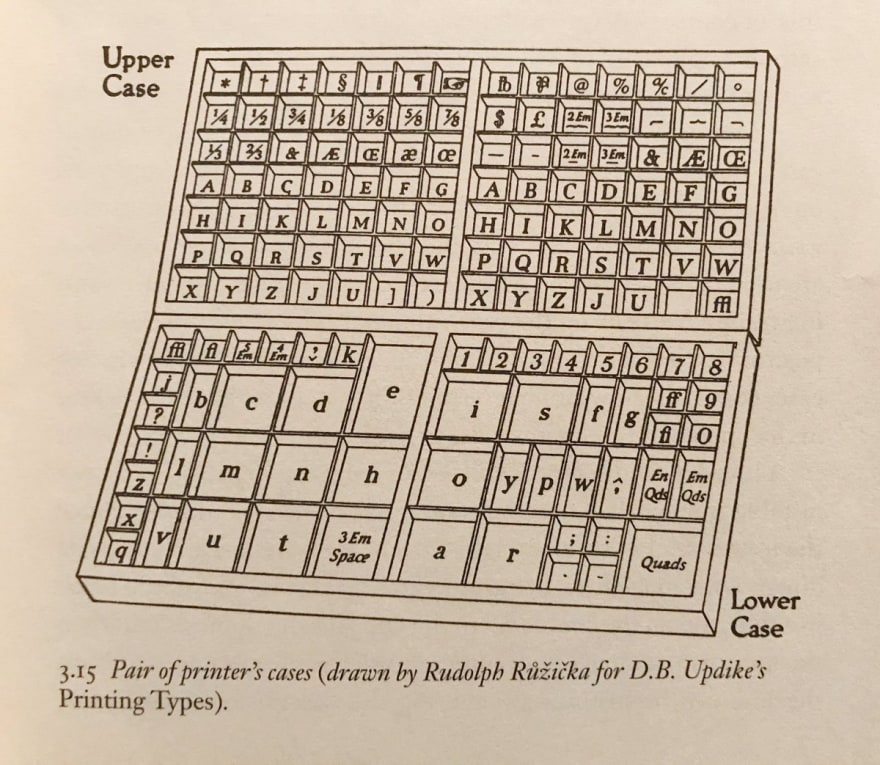3 Years ago last month I made a simple tweet then went to bed.
It was one of those aha "I feel like an idiot for not making that obvious connection" moments.
Well as it turns out a lot of people felt the same way because I woke up to dozens of notifications. Years later, at 1.2 million impressions it's still my most active tweet (by a long shot). In the replies, twitter user "HTeuMeuLeu" followed up with this equally interesting bit of technology naming history:

 HTeuMeuLeu@hteumeuleu
HTeuMeuLeu@hteumeuleu @themattcoady Do you know about uppercase and lowercase?15:16 PM - 25 Apr 2018
@themattcoady Do you know about uppercase and lowercase?15:16 PM - 25 Apr 2018
Referring to the 'case' of letters used by printing press operators and the upper part of the case and lower part of the case to store the letters.
This got me thinking about what other terms have a long history hiding in plain sight. Wikipedia has a list dedicated to the subject: https://en.wikipedia.org/wiki/List_of_computer_term_etymologies
I'm just going to pick out a few favourites:
Cursor
Cursor is Latin for 'runner.' A cursor is the name given to the transparent slide engraved with a hairline that is used for marking a point on a slide rule. The term was then transferred to computers through analogy.
Dashboard
Originally, the word dashboard applied to a barrier of wood or leather fixed at the front of a horse-drawn carriage or sleigh to protect the driver from mud or other debris "dashed up" (thrown up) by the horses' hooves.
Patch
Historically, software suppliers distributed patches on paper tape or on punched cards, expecting the recipient to cut out the indicated part of the original tape (or deck), and patch in (hence the name) the replacement segment.
Ping
The author of ping, Mike Muuss, named it after the pulses of sound made by a sonar called a "ping".


















Top comments (0)